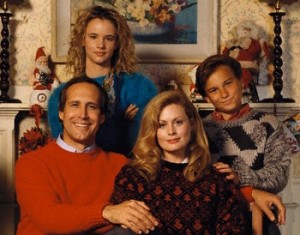Better Left Behind
Now for the less appealing side of Old School Business (OSB). Sometimes the greatest lessons are those that illustrate what not to do. Here’s what we can learn from a major OSB failure:
A tremendous pitfall of working in the 80s and 90s was the lack of humanity in business. The corporate machine stopping at nothing to meet the bottom line was the standard image of success during these two decades—and a cold standard, at that. We see this big business stereotype illustrated again and again in 80s and 90s films.

The classic film, National Lampoon’s Christmas Vacation, for example, deftly hits the nail on the head. The main character, Clark Griswold, is an average, middle-class professional working in corporate America. He puts a down payment on an outdoor pool for his family, which he plans on paying off with his annual Christmas bonus. Clark later discovers that his coldhearted company and boss are replacing bonuses with a Jam of the Month Club membership. He is devastated by this news and feels unappreciated by his company. The story spirals into an unexpected turn of events because of the upset. Sadly, this narrative is a fairly accurate depiction of the work culture during that time.
Large corporations really didn’t care about pleasing their employees—or even their customers, for that  matter. The latter sounds especially outrageous in today’s customer-centric culture. Large corporations during this era, like Johnson & Johnson or Proctor & Gamble, didn’t have to worry about pleasing their clientele because there simply wasn’t a lot of market competition. For example, a consumer in the 80s may have had one or two brands of soap to choose from at their drugstore. Today, consumers have at least ten soap brand options. Consumers today also have the option of forgoing a physical shopping experience and purchasing all their goods from online retailers.
matter. The latter sounds especially outrageous in today’s customer-centric culture. Large corporations during this era, like Johnson & Johnson or Proctor & Gamble, didn’t have to worry about pleasing their clientele because there simply wasn’t a lot of market competition. For example, a consumer in the 80s may have had one or two brands of soap to choose from at their drugstore. Today, consumers have at least ten soap brand options. Consumers today also have the option of forgoing a physical shopping experience and purchasing all their goods from online retailers.
This kind of variety and competition just didn’t exist during the OSB era. Because of the lack of available options, consumers had to give a large portion of their business to a select few companies, whether they liked it or not. This allowed big corporations to have monopolies over their given markets, which shifted the focus away from figuring out how to make customers happy to strictly how to make profits. As a result, a lot of humanity was lost in the business practices and values of this era.
Fortunately many companies today have moved beyond this outdated mindset. Appreciating and supporting employees and customers is a paramount value that needs to be included every business model, and this is widely reflected in today’s business culture. Let’s be real for a moment: this practice goes beyond being considerate or kind, it’s good business.
No matter what niche your venture falls into, today’s market is an extremely competitive one. Consumers can now be choosy about where they take their business. One of the best strategies for creating a loyal customer base and a high-value, diligent work culture is to treat customers and employees with respect. That isn’t rocket science. It’s common sense.
This article is an excerpt from the book “The Whiteboard: Go from Blank Canvas to a Productive, Leveraged, & Highly-Profitable Business†by Chris Haddon and Jason Balin. Please click here to see more.

Write a Comment